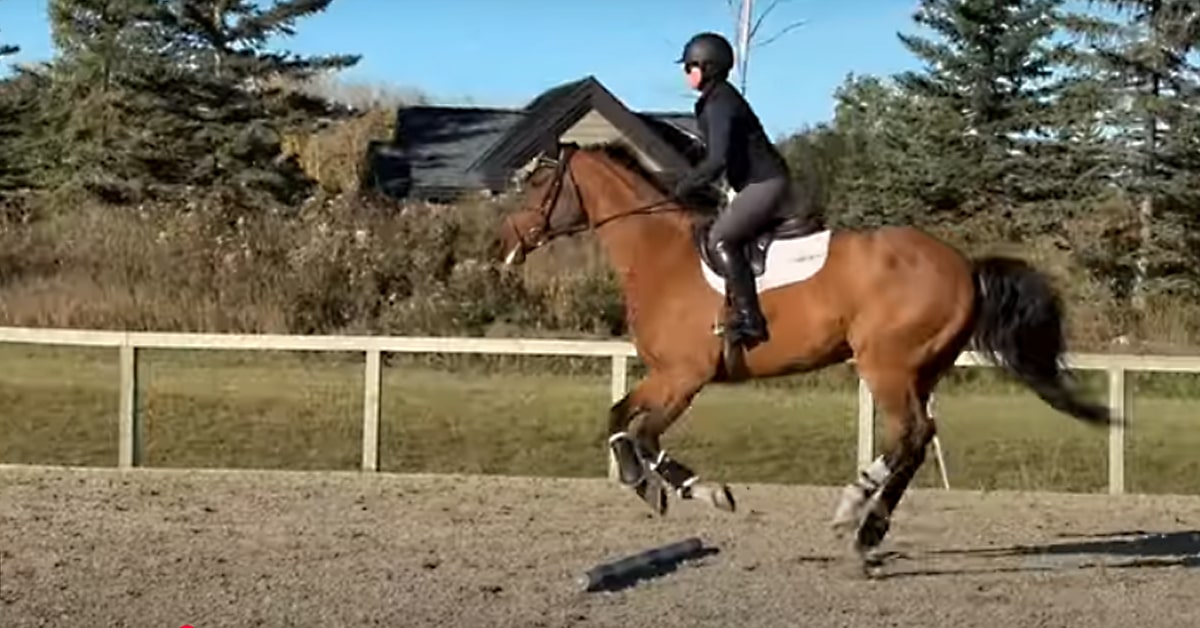When it comes to transporting horses internationally, especially for competition, the ATA Carnet is a powerful tool — but it’s also more complex than it appears. If you’re planning to take your horse across the border, understanding how a carnet works, its associated costs, and the potential pitfalls is essential to avoiding delays, extra fees, or even legal complications. Although the US government has chosen not to place tariffs on Canada at this time, many horse people are looking into the value of a carnet to make border crossings easier.
“We looked into doing it ourselves, but there is so much information it was easier for us to get somebody else to start it for us,” said Danny Ingratta, the head groom at Millar Brooke Farm, who recommends working with a professional carrier. “My experience with carnets is that if they get screwed-up in some way, shape or form, it is a really bad situation that requires a lot of fixing. It can be fixed, but you don’t want to ever be in that position.”
“An ATA Carnet is not as simplistic as it might sound. They are actually quite complicated,” says Kenneth Serrien, president of Overseas Horse Transport. With nearly two decades of experience helping equestrians move their horses internationally, Serrien emphasizes the importance of understanding how a carnet works and what can go wrong if it’s mishandled.
What is an ATA Carnet and Why Use One?
The ATA Carnet is a customs document that facilitates the temporary import and export of goods. For horse owners, this means you can take your horse and related gear like wheelbarrows, buckets, trunks, etc. to another country and back again without incurring the taxes normally levied on imported items.
“Carnet is actually a customs passport. It allows people to import and export, temporarily, goods into foreign countries,” explained Serrien. The carnet is always backed by a bond, which serves as a form of security for customs. If there’s an issue — for example, if the horse never leaves the foreign country — customs authorities can use the bond to recover owed duties and taxes.
Application and Costs
The carnet application process requires several documents. If you are applying through a professional carrier, several documents will be requested including a Power of Attorney to allow the carrier to act on your behalf, the ATA Carnet contract, a copy of the horse’s passport, and a general list of goods—like tack trunks, buckets, golf carts, etc. When you apply for the carnet it’s a good practice to include any possible items you might travel with on the list. Since the Carnet is valid for one year, the list of items that comes on each trip might change, but you’re not obligated to bring all items that were originally applied for. You do, however, have to make sure that all items on your list return.
While the base service fee for obtaining a carnet through a provider like Overseas Horse Transport is around $1,850, that number can rise quickly depending on the value of the horse and equipment. “That $1,850 is just a price point based on a $10,000 horse – the cost could be more than that, depending on the value you declare,” Kenneth says.
The bond required is 40% of the declared value of all goods on the carnet. So, if your horse and gear are valued at $100,000, the bond amount is $40,000. This bond can be covered in two ways:
A cash bond, where you put up the entire amount yourself.
A third-party bond lender, who charges a fee to provide the bond on your behalf. The fee can vary widely and depends on the value of the carnet.
“If the carnet is worth $100,000, then the bond is $40,000,” noted Serrien. “But the fee the bond company could charge could be $1,500 or more depending on the risk the bond company is taking.”
Declaring a “True” Horse Value
Determining the horse’s value is a balance between accuracy and practicality. Customs officials expect a reasonable and realistic valuation, and undervaluing a horse can raise red flags.
“It needs to be a true value. So if you’re a high-end show jumper telling me your horse is worth $2,500, that’s not going to fly,” Serrien says of the practice of professional carriers to declare all horses at that value. “But if you’re saying your horse is worth $10,000 or $15,000, and it fits the profile of the competition or purpose, that’s acceptable.”
What If You Sell the Horse Abroad?
Sometimes, plans change. If you receive an offer for your horse while abroad and choose to sell, the carnet must be closed and replaced by a formal import entry. To close the carnet you will need a bill of sale and proof that any applicable taxes have been paid at which point the bond can be revoked.
Border Crossings and Paperwork Pitfalls
The carnet is a paper-based system with color-coded vouchers that must be stamped at each border crossing. Yellow vouchers are for the country of origin, white for the destination country, and blue for transit countries. Mistakes here can be costly.
“We’ve seen Canadian customs forget to validate the carnet before goods leave. That makes the whole carnet useless,” Serrien warns. He also cautions against losing the carnet itself. “Some clients give it to a groom, and it ends up ruined at the bottom of a trunk. Then it’s gone. If we can’t prove the goods left the country, customs can claim 40% of their value.”
Even digital photos may not be enough. “You can take a picture, sure—but customs officers may not accept it. It’s up to their discretion.”
The Risk of Human Error
Another challenge is customs and transport staff unfamiliar with carnets. “They’ll stamp the wrong voucher—yellow instead of white, for example. Then we have to clean up the mess, because now the vouchers won’t match.”
If goods enter through one port and leave through another, it can create confusion. Kenneth explains: “Let’s say you enter by road someplace and then fly out of Miami. If Miami customs don’t send the paperwork back to the original border crossing, it might look like the goods never left the US. Then we have to chase documentation to prove otherwise.”
Closing the Carnet
When the trip is complete, the carnet must be formally closed. The fees paid to a professional carrier cover these details which includes scanning the documents, submitting them to the Chamber of Commerce, and addressing any issues that may arise.
“If there’s a potential claim—for example, from Europe—we submit documentation to prove the goods returned to Canada. Then it’s up to foreign customs whether they accept it or issue a claim.”
Why an expert is good idea
The carnet system, while powerful, is also vulnerable to human error and misunderstanding. “It’s not just about filling in a form. We have one staff member who does nothing but track carnets for our clients,” shared Serrien. “Clients lose them, customs officers make mistakes, or vouchers run out—and we’re there to fix it. Carnets should make your life easier, but if something goes wrong, you need people who know how to solve it—because it can go sideways very quickly.”
The Latest









